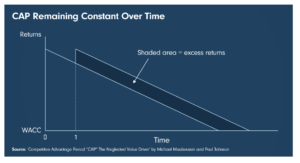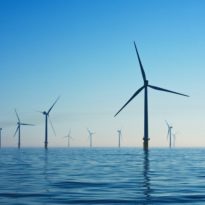Most investors can agree that environmental, social and governance (ESG) factors help determine a company’s prospects for long-term value creation. But how should we quantify the valuation impact of sustainable investing? Dhananjay Phadnis, lead portfolio manager and Flora Wang, co- portfolio manager, Fidelity Sustainable Asia Equity Fund provide insight.
Investing strategies focused on environment, social and governance factors, better known as ESG strategies, often employ screening, exclusions, and integration among other tactics. But at their core, all these strategies are about investing in ‘sustainable’ businesses.
This may sound simplistic, but achieving a long-term future for any business hinges on sustainability pervading all aspects of the company. To be clear: a company that ignores its environmental externalities, is unable to retain talent, or is not compliant with regulations won’t be able to sustain its operations into the future. Conversely, as numerous studies have shown, companies with higher sustainability characteristics deliver superior value over the longer term.
This article aims to clarify the link between sustainability and value creation. There is general agreement about why this link exists – a business which does not pursue stakeholder value creation or ignores the E, S or G aspects is bound to stumble and destroy value, like a car with one or more wobbly wheels. Here, we aim to address the ‘how’ of assessing this via our valuation approaches.
Avoiding value destruction through a ‘sustainability’ lens
A recent example is China’s peer-to-peer (P2P) lending industry, which saw rapid growth until a few years ago. By June 2018, estimated P2P outstanding loans topped 1 trillion renminbi ($155 billion). Before regulators stepped in, companies such as Yirendai, Paipaidai and Qudian were charging effective interest rates as high as 35 to 40 per cent. In the years since, regulatory intervention has helped lead to a dismantling of the P2P lending industry in China.
Investors looking at the sector’s rapid rise through a sustainability lens might have been better able to sidestep some of the value destruction that ultimately ensued. Interest rates charged by some of these companies were clearly excessive and unsustainable.
Examples abound globally. The story of Martin Shkreli’s Turing Pharma is another case of an unsustainable business model, whereby the firm in its bid to boost profits, put through massive price increases for life-saving medicines that then became unaffordable for most patients. Value destruction can also come from companies that have run businesses with unsustainable debt structures such as General Electric, which in recent times was forced to undertake significant asset sales to pare down debt.
Valuation implications
The principle of sustainability is linked to the concept of Competitive Advantage Period (CAP) developed by Miller & Modigliani in 1961, which was expanded upon by Michael Mauboussin and Paul Johnson in 1997. Essentially, the longer a company can expand its CAP, the more value it will create.
We can expand this concept further by calling it Sustainable Competitive Advantage Period (SCAP). This is a period during which, by virtue of its ESG and stakeholder-centric business practices, a company can reduce the risks to longevity of its CAP and prolong this period thereby driving value.
All valuation methodologies, whether they are the traditional ones of price to earnings and price to book, or the recently popular ones like price to sales or enterprise value to sales, are essentially shortcuts to understanding the present value of future cash flows, which investors also calculate via a discounted cash flow (DCF) analysis.
In the example table below, Company 1 and Company 2 are in the same industry facing similar dynamics. They both generated $100 of free cash flow in Year 1. Company 1 is focused on growth and has pushed a new generation product, despite potential safety hazards for its customers. Company 2 is focused on product safety and has been willing to invest in a higher R&D effort, at the cost of some near-term cash flows.
After a few years, Company 1 experiences safety issues that triggers regulatory intervention and leads to a reset in its FCF down to $25 by Year 6. What’s more, there is now no potential for Company 1 to grow earnings. Company 2 sees steady growth and gives us the confidence to project a 3 per cent terminal growth for its products. Using a similar 7 per cent discount rate for the two companies, we can see the results in the table below:
For the sake of simplicity, we discounted both companies by the same rate, but this might have been too generous. In reality, Company 1 should see its cash flows discounted by a much higher discount rate given the inherently higher risk in its business operations.
As an alternate example, let’s take a look at another commonly used valuation metric – P/E ratios. This approach considers the earnings power of the business now and awards the company a ‘n’ number of years of realizing such earnings. While ‘n’ depends on a few other variables such as growth, returns and cost of capital, the sustainable period of excess returns is a key driver of the P/E multiple.
When we look at the P/E (we have assumed free cash flows are equivalent to earnings to keep it simple) for two companies in the early years of the forecast horizon, the results are stark. Company 1 deserved a much lower multiple to discount for the lack of sustainability in its operations. However, it is very likely that the market would ascribe it a much higher multiple than Company 2 in the early years of strong growth.
This is what makes sustainability important and a big factor in long-term value creation. It can help close the gap between expectations and outcomes, while protecting an investment from a permanent loss of capital.
What are the red flags investors can look out for?
Some red flags that investors should look out for include excessive returns, complex business structures, lack of regulatory clarity, short-term focused management incentive structures, low or no focus on a stakeholder analysis, and reliance on debt to enhance returns.
While this list is not comprehensive, viewing any business through a sustainability lens will go a long way in helping investors allocate capital to companies that will drive long term value creation and mitigate exposure to permanent loss of capital. In the case of the Chinese P2P industry mentioned earlier, excessive returns of the lenders, complex fee structures and lack of regulatory clarity were all red flags.
Sustainability should be a key part of any investment analysis
Sustainability of a business is a key input in estimating its potential for value creation. While analysts tend to focus on estimating the competitive advantage period, true sustainability comes when a business takes it farther, with a focus on relevant ESG aspects and by adopting a stakeholder-centric approach. A comprehensive evaluation of sustainability should be a key part of any investment analysis.
Learn more about the Fidelity Sustainable Asia Equity Fund.
(The Fidelity Sustainable Asia Equity Fund will be launched on 26 April 2021 through repurposing the Fidelity Emerging Asia Fund.)
Important Information
The value of investments and the income from them can go down as well as up and clients may get back less than they invest. Past performance is not a guide to the future. Investors should note that the views expressed may no longer be current and may have already been acted upon. Changes in currency exchange rates may affect the value of an investment in overseas markets. Investments in emerging markets can be more volatile than other more developed markets. Reference to specific securities should not be interpreted as a recommendation to buy or sell these securities, but is included for the purposes of illustration only. The Fidelity Sustainable Asia Equity Fund has the potential of having high volatility either due to its composition or portfolio management techniques. It can also use financial derivative instruments for investment purposes, which may expose it to a higher degree of risk and can cause investments to experience larger than average price fluctuations. Please note that at least 70% of the portfolio invests in Asia ex-Japan stocks with strong sustainability characteristics – a minimum ESG rating of BB by MSCI. However, the portfolio managers will aim to achieve a higher threshold, targeting at least 70% of the portfolio invested in companies rated BBB and above by MSCI. If unrated by MSCI, rated C or above by Fidelity Sustainability Ratings. Our ratings score issuers on an A-E scale and trajectory forecast based on fundamental bottom-up research and materiality assessment using criteria specific to the industry of each company. A focus on securities of companies which maintain strong environmental, social and governance (“ESG”) credentials may result in a return that at times compares unfavourably to similar products without such focus. No representation nor warranty is made with respect to the fairness, accuracy or completeness of such credentials. The status of a security’s ESG credentials can change over time. This material was created by Fidelity International. It must not be reproduced or circulated to any other party without prior permission of Fidelity. Investments should be made on the basis of the current prospectus, which is available along with the Key Investor Information Document, current annual and semi-annual reports free of charge on request by calling 0800 368 1732. Fidelity only gives information on products and services and does not give investment advice to retail clients based on individual circumstances. Any comments or statements made are not necessarily those of Fidelity. All e-mails may be monitored. Issued by FIL Pensions Management, authorised and regulated by the Financial Conduct Authority and Financial Administration Services Limited, authorised and regulated by the Financial Conduct Authority. Fidelity International, the Fidelity International logo and F symbol are trademarks of FIL Limited. UKM0321/34008/SSO/NA






































